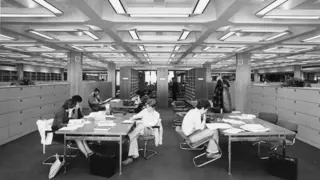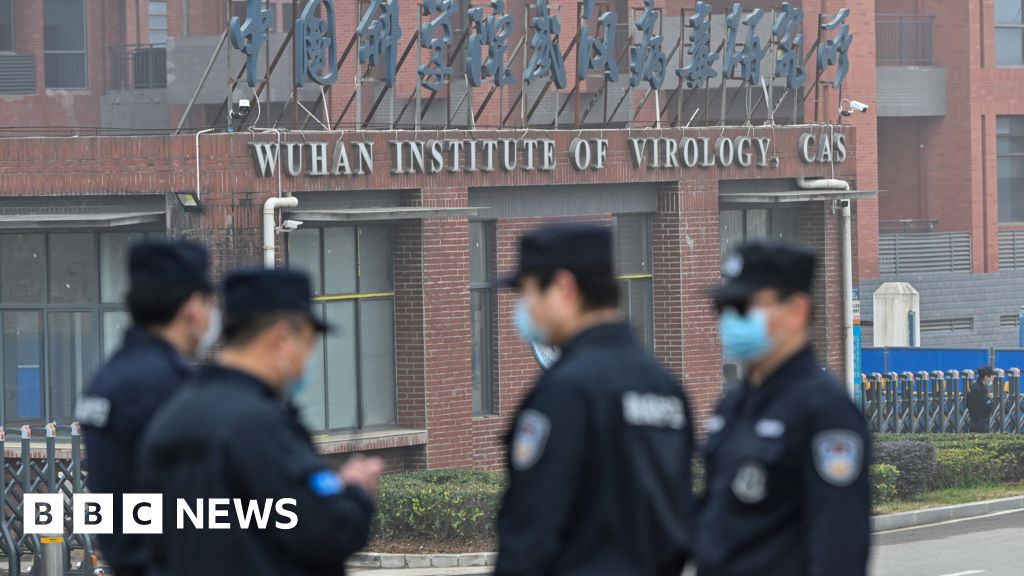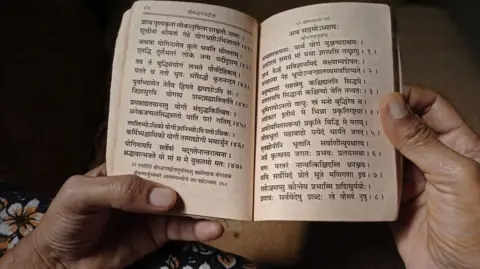 Getty Images
Getty ImagesIn 1996, Ananya Vajpeyi, a doctoral student, discovered the fabled South Asia collection of books at the University of Chicago’s Regenstein Library.
“I’ve spent time in some of the leading South Asia libraries of the world, at Oxford and Cambridge, Harvard and Columbia. But nothing has ever matched the unending riches held at the University of Chicago,” Ms Vajpeyi, a fellow at India’s Centre for the Study of Developing Societies (CSDS), told me.
The 132-year-old University of Chicago houses more than 800,000 volumes related to South Asia, making it one of the world’s premier collections for studies on the region. But how did such a treasure trove of South Asian literature end up there?
The answer lies in a programme called PL-480, a US initiative launched in 1954 under Public Law 480, also known as the Food for Peace, a hallmark of Cold War diplomacy.
Signed into law by President Dwight D Eisenhower, PL-480 allowed countries like India to buy US grain with local currency, easing their foreign exchange burden and reducing US surpluses. India was one of the largest recipients of this food aid, particularly during the 1950s and 1960s when it faced severe food shortages.
The local currency funds were provided at minimal cost to participating US universities. These funds were used to purchase local books, periodicals, phonograph records, and “other media” in multiple Indian languages, enriching collections at over two dozen universities. Institutions like the University of Chicago became hubs for South Asian studies as a result. (Manuscripts were excluded due to Indian antiquity laws.)
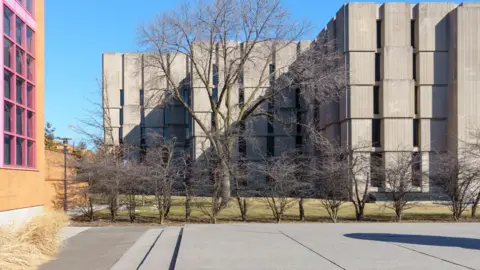 Getty Images
Getty Images“PL-480 has had amazing and unexpected consequences for the University of Chicago and for more than 30 other US collections,” James Nye, director of the Digital South Asia library at University of Chicago, told the BBC.
The process of building an impressive library collection from South Asia was no simple task.
A special team staffed by 60 Indians was established in Delhi in 1959. Initially focused on picking up government publications, the programme expanded over five years to include books and periodicals. By 1968, 20 US universities were receiving materials from the growing collection, as noted by Maureen LP Patterson, a leading bibliographer of South Asian studies.
In a paper published in 1969, Patterson recounted that in the early days of the PL-480, the team in India faced the challenge of sourcing books from a vast, diverse country with an intricate network of languages.
They needed the expertise of booksellers with a reputation for good judgement and efficiency. Given India’s size and the complexity of its literary landscape, no single dealer could handle the procurement on their own, Patterson, who died in 2012, wrote.
Instead, dealers were selected from various publishing hubs, each focusing on specific languages or groups of languages. This collaboration worked seamlessly, with dealers sending titles they were not certain about for approval. The final selection rested with the Delhi office, Patterson noted.
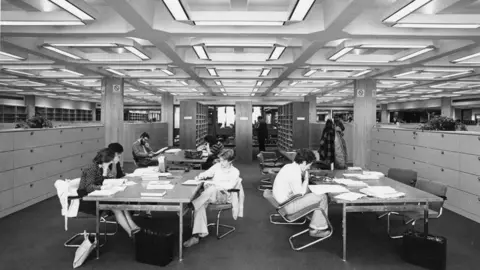 University of Chicago Photographic Archive
University of Chicago Photographic ArchiveThe programme was keen on picking up a comprehensive collection of Indian fiction in all languages. “The policy netted a huge number of detective stories and novels of no lasting value,” wrote Patterson.
In 1963, the choice for acquiring books was narrowed down to “research level material” – and intake of fiction in many languages was halved. By 1966, more than 750,000 books and periodicals were sent to American universities from India, Nepal and Pakistan, with India contributing more than 633,000 items.
“We’ve sent works like History of India from 1000 to 1770 AD, Handicrafts in India, Hindu Culture and Personality: A Psychoanalytic Study, and more,” a report on a meeting in an US library on the programme in 1967 said.
Todd Michelson-Ambelang, librarian for South Asian studies at the University of Wisconsin–Madison, wonders if vast collections from the region in US and other Western libraries took away literary resources from the Indian sub-continent.
Founded during Cold War tensions and funded by PL-480, his university’s South Asia centre grew its library to more than 200,000 titles by the 21st Century.
Mr Michelson-Ambelang told the BBC that the removal of books from South Asia through programmes like PL-480 “creates knowledge gaps”, as researchers from there often need to travel to the West to access these resources.
It is unclear whether all the books acquired by US universities from India at that time are still available there. According to Maya Dodd, of India’s FLAME University, many books now unavailable in India can be found in the University of Chicago’s library collections, all marked with the stamp saying “PL-480”.
“For the most part, books that came through the PL-480 programme are still available in South Asia. But preservation is often a challenge due to white ants, pests, and a lack of temperature and humidity control. In contrast, most materials in the West remain well-preserved thanks to the preservation and conservation efforts in our libraries,” Mr Michelson-Ambelang says.
 Ananya Vajpeyi
Ananya VajpeyiAnother reason why Mr Michelson-Ambelang calls the Western libraries colonial archives “partly is because they serve academics, often excluding those outside their institutions. While librarians understand the disparities in access to South Asian materials, copyright laws limit sharing, reinforcing these gaps”.
So, what happened when the PL-480 programme ended?
Mr Nye says the end of the programme in the 1980s, shifted the financial burden to American libraries. “Libraries in the US have had to pay for the selection, acquisition, collection, and delivery of resources,” he said. For example, the University of Chicago now spends more than $100,000 annually on buying books and periodicals through the Library of Congress field office in Delhi.
Ms Vajpeyi believes the books-for-grain deal had a positive outcome. She studied Sanskrit, but her research in University of Chicago spanned Indian and European languages – French, German, Marathi, and Hindi – and touched on linguistics, literature, philosophy, anthropology, and more. “At the Regenstein Library, I never failed to find the books I needed or get them quickly if they weren’t already there,” she says.
“The books are safe, valued, accessible and used. I’ve visited libraries, archives and institutions in every part of India and the story in our country is universally dismal. Here they were lost or destroyed or neglected or very often made inaccessible.”
